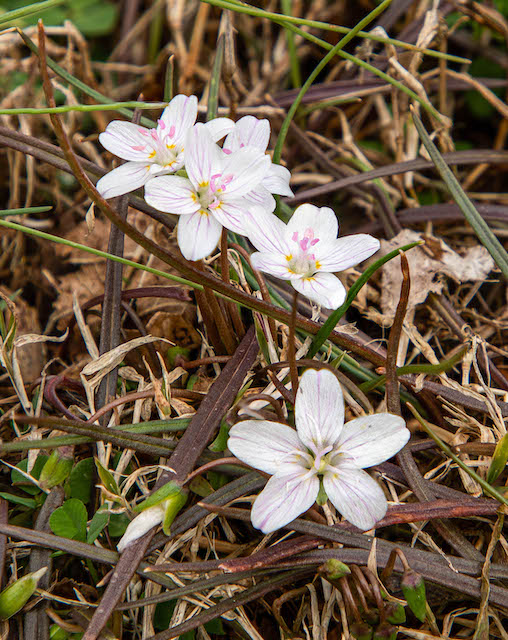Spring wildflowers and spring dry fly fishing go hand in hand. Both usually kick off the season around the same time. With more than a little rain lately, the spring dry fly fishing might be tougher than usual this year, but the wildflowers are still blooming where they are supposed to.
Yesterday, I wanted to play around with some new techniques with the camera and post-processing. Focus stacking is a way to get better depth of field in pictures, and my main motivation for learning this technique is spring wildflowers. That said, I'm sure I'll also be using this technique in landscape photography as well.
Practicing Focus Stacking
Before leaving home, I gave it a quick try on the crocus blooming in my front yard. The method of focus stacking in Photoshop was quite simple, and I was ready to get some wildflowers photographed.
We headed to a nearby segment of the Cumberland Trail that we enjoy short trips to quite frequently. We are tremendously blessed to have so much good hiking close to home. On many days, we have a hard time deciding where to go because there are so many choices. This time, not wanting to spend a whole day, we decided to stay closer to home. My main goal was wildflowers which narrowed down the options considerably since it is still early in the season.
Applying Focus Stacking Principles in the Field with Spring Wildflowers
Arriving at our hiking location, we were surprised to find the gate closed. The sign still said it was open, but we couldn't access the usual parking area. Thankfully, there was room to park just outside the gate without blocking anything. Soon, we were walking down the hill and starting the loop hike we enjoy. It didn't take long to find the first wildflowers of interest.
Spring beauties are one of my favorite early season wildflowers. They often grow in profusion, covering large areas in small white and pink blossoms. The main color is generally white, with small streaks of pink if you look closely. My parents' yard is always a treat this time of year once they start blooming because of the density of blooms. Since it was still early, we didn't find as many as there will be in another week. There were still more than enough to enjoy some photography and practicing my photo stacking technique.
My camera is a nice one, but so far I only have two lenses for it. Thus, I was stuck using a non macro lens and doing my best to make it work. The results have been better than I expected, and while I still want a dedicated macro lens as soon as possible, this will at least get me through spring wildflower season.
Obviously, a macro lens would have been sharper, but considering how small these flowers are, I'm still reasonably satisfied with the result. I at least have something to play around with during the spring wildflower season.
After I took a few pictures, we continued our loop. The main attraction would be close to the end I hoped. In the meantime, I was keeping an eye out. Surprisingly, all I found was some type of speedwell, and a few more spring beauties. I had been looking for some other early bloomers such as bloodroot or anemone or toothwort, but they simply weren't there yet.
By the time we were approaching the end of our loop, I was excited to see what was blooming where I expected things to be. Sure enough, we rounded a corner and I began spotting blooms right away. Sharp lobed hepatica blooms in profusion in this area due to a strong limestone outcropping. I have a few places in our area that I know I can go find these beautiful flowers, but this is the most accessible. There were even a few exceptionally colored blooms in addition to the usual white flowers. Here is my favorite, shot using the focus stacking technique. This image is a composite of eight individual images, each with a varying depth of field.





No comments:
Post a Comment